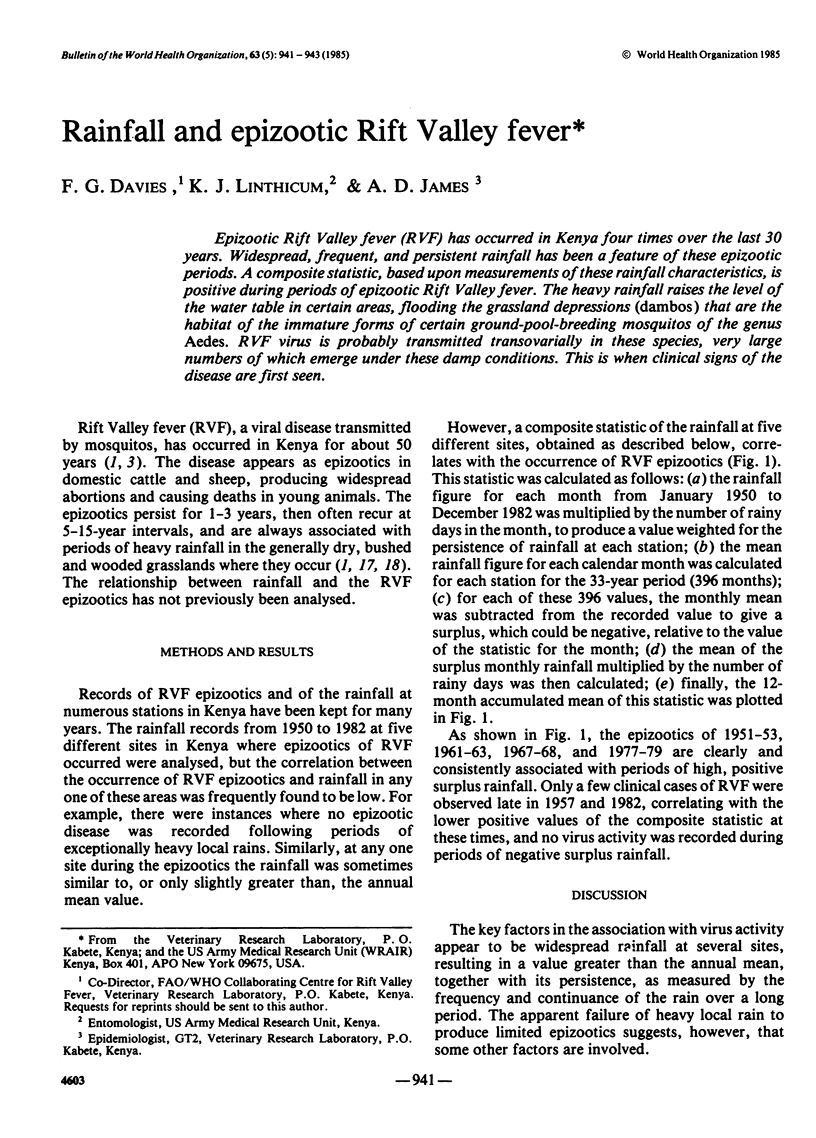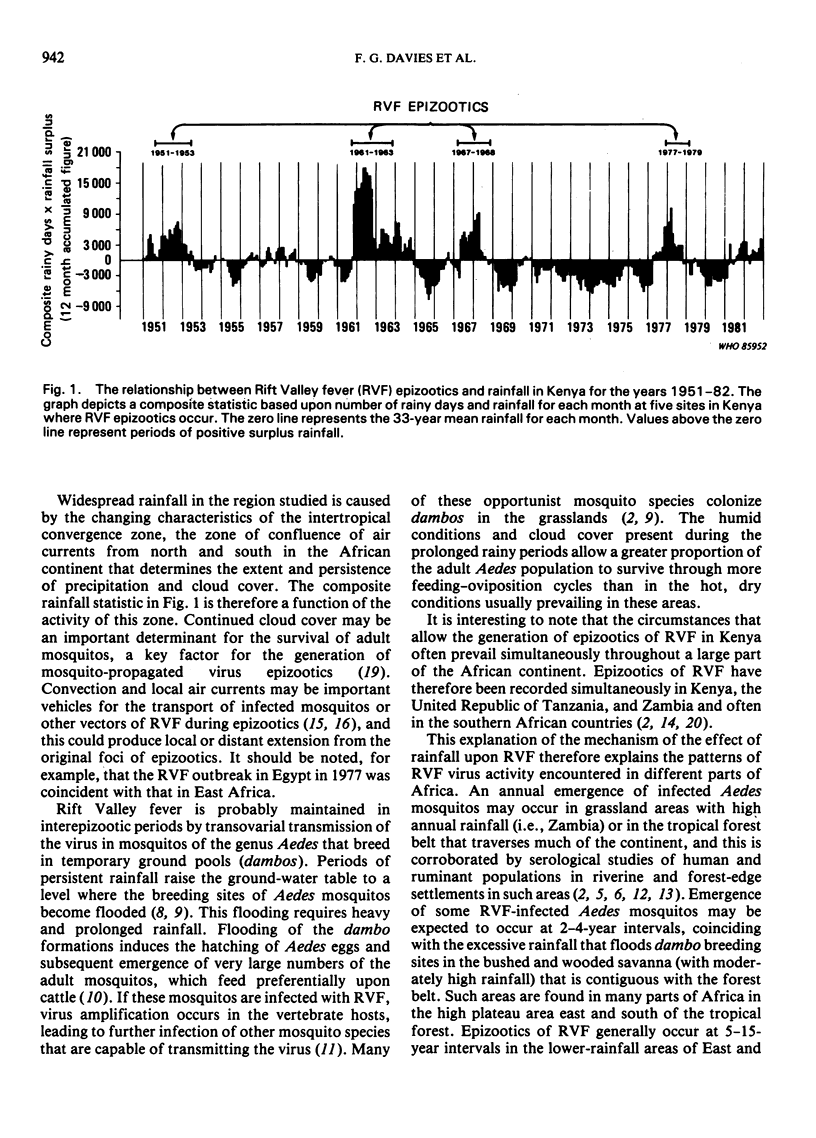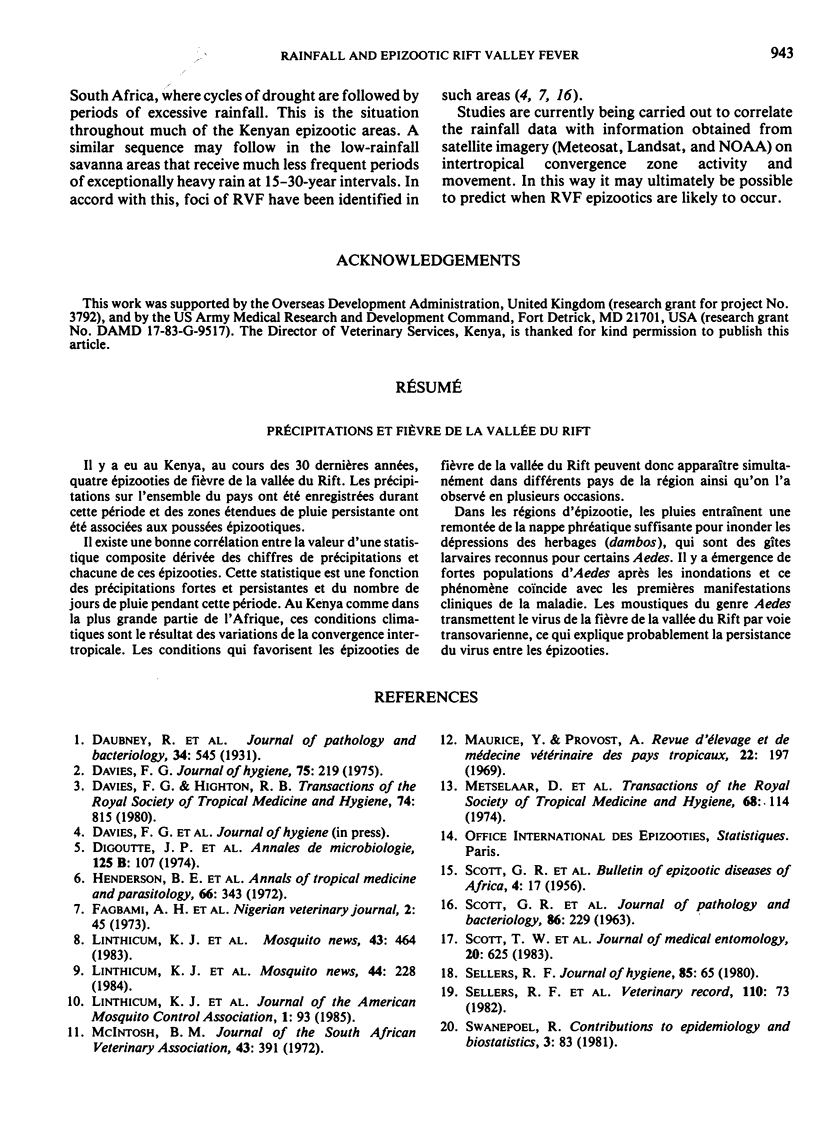Abstract
Epizootic Rift Valley fever (RVF) has occurred in Kenya four times over the last 30 years. Widespread, frequent, and persistent rainfall has been a feature of these epizootic periods. A composite statistic, based upon measurements of these rainfall characteristics, is positive during periods of epizootic Rift Valley fever. The heavy rainfall raises the level of the water table in certain areas, flooding the grassland depressions (dambos) that are the habitat of the immature forms of certain ground-pool-breeding mosquitos of the genus Aedes. RVF virus is probably transmitted transovarially in these species, very large numbers of which emerge under these damp conditions. This is when clinical signs of the disease are first seen.
Full text
PDF




